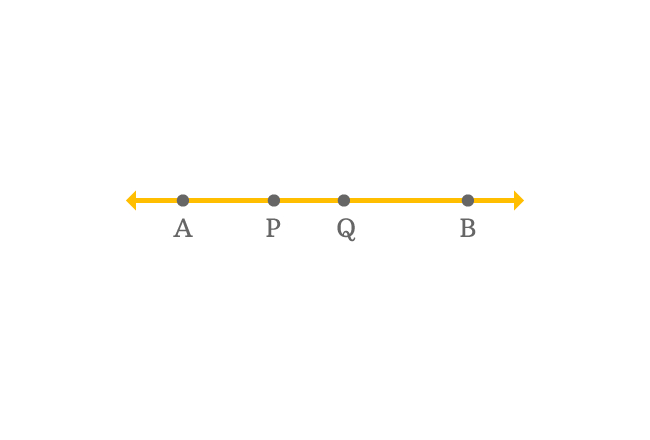Collinear points are a fundamental geometry concept often used to prove theorems and solve problems.
By definition, collinear points are points that lie on the same line. This means if you draw a straight line connecting any of these points, it will pass through the other points.
One of the most essential properties of collinear points is that they cannot be arranged in any other way. If three or more points are collinear, they will always lie on the same line, no matter how you try to move them around.
Another important property of collinear points is that they help us understand the relationships between lines and angles. For example, if we know that three points are collinear, we can use this fact to prove that certain angles are equal or that certain lines are parallel.
Here are a few examples to help us better understand collinear points.
Examples of Collinear Points in Real-Life
1. A Group Of Students Standing In A Straight Line
Imagine a group of students standing in a straight line during an assembly or waiting their turn to enter the classroom. The heads of the students form a straight line, representing collinear points. In this case, each student is considered as one point.
2. A Bunch Of Oranges Kept Next To Each Other
Imagine 12 oranges placed in a straight line on a table. The centers of these oranges form a straight line, which are considered collinear points. In this example, each orange is considered one point and lies on the same imaginary straight line.
3. A Row Of Streetlights On A Highway
We often see rows of streetlights in a straight line when driving on a highway at night. The tops of these streetlights form collinear points. This helps ensure the road is well-lit and safe for drivers.
4. A Series Of Power Poles Along A Road
Similar to streetlights, power poles are often placed in a straight line along roadsides. The tops of these power poles form collinear points, which help ensure that electricity can be transmitted efficiently from one pole to another. This formation ensures the smooth functioning of our infrastructure and utilities.
5. A Row Of Seats In A Movie Theater
We often find rows of seats arranged in a straight line when we enter a movie theatre. The backs of these seats form collinear points, which help ensure the audience has an unobstructed view of the screen. This provides comfort and convenience for movie-goers.
6. A Line Of Trees Along A Path
While walking or hiking on a trail, we often come across lines of trees planted along the path. The trunks of these trees form collinear points, which help guide our direction and provide shade from the sun. If you were to lean towards one tree and look straight, you would only see one tree since the rest are blocked by the first one. Each tree is considered one point since they are arranged on the same imaginary straight line.
Also check: 11 Non-Collinear Points Examples in Real Life
7. A Row Of Books On A Shelf
We often see rows of books placed neatly on shelves in libraries or bookstores. The spines of these books form collinear points, which help organize and categorize different genres and topics for easy access to readers.
8. A Group Of Buildings Along A Street
In urban areas, we often see groups of buildings lined up along streets, forming skylines. The tops or bases of these buildings help to create visual appeal and organization to cityscapes while also providing landmarks for navigation purposes.
9. A Lineup At A Checkout Counter
When shopping at stores, we often find ourselves waiting in lines at checkout counters with other customers ahead or behind us, forming queues. The heads or bodies of these customers help maintain orderliness and fairness during transactions while indicating progress towards completion time-wise.
10. A Rowing Team Paddling Together
During crew races or practices, we often see teams paddling with their oars moving simultaneously through water, forming parallel lines called “strokes”. The tips or handles of these oars form collinear points, which help maintain synchronization among team members while maximizing propulsion efficiency.
11. A Group Dance Performance With Formations
In dance performances involving group choreography, we often see formations where dancers move into shapes like circles, squares, etc. The edges or centers of these shapes form create visually appealing designs while maintaining coordination among performers.


